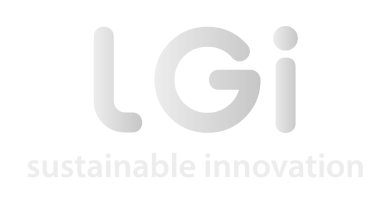LGI recently carried out an interview with Veolia on the subject of urban heat islands. Read on to learn more about this particular challenge faced in cities around the world.
1. Veolia (through its Business Units 2EI then Seureca) has been working on the issue of “urban heat islands” issue in recent years. Could you explain this phenomenon and how Veolia is acting on it?
Cities are increasingly experiencing episodes of high temperatures, that are particularly intense in summer and higher than in the countryside, due to global warming, dense population, their increasing construction their mineralization and the lack of vegetation. Cities are increasingly confronted with what are called “urban heat islands” (UHI), a phenomenon that is difficult for the population to bear. High temperatures can have significant consequences on the environment environmental consequences (increased air pollution, increase in energy consumption, etc.) but also health consequences (dehydration, sunstroke, fatigue, headaches, etc.) and will be more dramatic for frail people.
To act on the temperatures of urban spaces and the ground which absorb heat during the day and discharge it in the evening, preventing cities from cooling down, adaptation solutions must be designed – as example : increasing green spaces, which, thanks to plants, play the role of solar filter and allow evapotranspiration, or developing eco-friendly public transport to reduce anthropogenic heat …
To this end, Veolia is developing new expertise to act directly and instantaneously on heat in cities.
2. What services/products do you offer today on the subject of urban heat islands?
As a close partner of cities, Veolia brings solutions to lower the ground temperature by 10 to 15°C and the temperature perceived up to 5°C (calculated by the UTCI – Universal Thermal Climate Index). This involves personalized support in 4 stages: through a 4 stages support:
1. Citywide UHI risk mapping, using diagnostic tools developed internally;
2. UHI cooling solutions modeling at the scale of an urban heat island and technical and cost/benefits feasibility studies.
3. Adapted cooling solutions implementation. An example of solutions implemented is such as “evaporative paving stones”: suitable for pedestrian areas. In the event of case of high temperatures, this system injects water under the paving stones, using a drip system, cooling the surface through the water’s progressive evaporation by capillary action capillary evaporation. These solutions use, as far as possible, non-drinkable water (raw water or rainwater stored and pre-treated for this type of use thanks to depolluting outlets developed by Veolia).
4. Thermal comfort monitoring and measurement
To date, our solutions were implemented and tested in several French cities in France: Toulouse, Nice, Bordeaux, Paris La Défense and several other new projects are underway. For example, 200 m2 of cooling Saint Jacques scallop paving stones (suppression de la virgule) were installed and tested during summer 2021 on the esplanade of La Défense. A rainwater collection and storage system supplies the system.
3. Can you tell us a few words about your collaboration with LGI on this subject?
LGI supported us at several stages of the development of this service offering: from the initial field assessment of the evaporative pavement solution to the launch of the solution we are now offering to cities. Along the way, 60 European cities were interviewed in 2019 to better understand the issue and their needs, followed by a face-to-face workshop to co-created their solution scenarios for the participating cities. LGI has been a great help in rethinking our approach, our business model and our commercial strategy to make this offering a reality.
Interested in the work Veolia is doing to act on rising urban temperatures? Click here to learn more!




FOLLOW US